Mi visita al Museo Arqueológico Nacional de Atenas, Grecia, 2da parte / My visit to the National Archaeological Museum of Athens, Greece, 2nd part
Saludos! Espero todos estén muy bien. La semana pasada los llevé a un viaje virtual por la historia y algunas de las piezas más destacadas del Museo Arqueológico Nacional de Atenas en Grecia, aquí la primera parte. En esta oportunidad les traigo la segunda parte de esta inolvidable visita con una muestra de otras interesantes piezas de escultura, relieves, cerámica y oro que pude fotografiar. Empecemos.
Greetings! I hope everyone is very well. Last week I took you on a virtual journey through the history and some of the most outstanding pieces of art of the National Archaeological Museum of Athens in Greece, here the first part. This time I bring you the second part of this unforgettable visit with a sample of other interesting pieces of sculpture, reliefs, ceramics and gold that I was able to photograph. Let´s go.
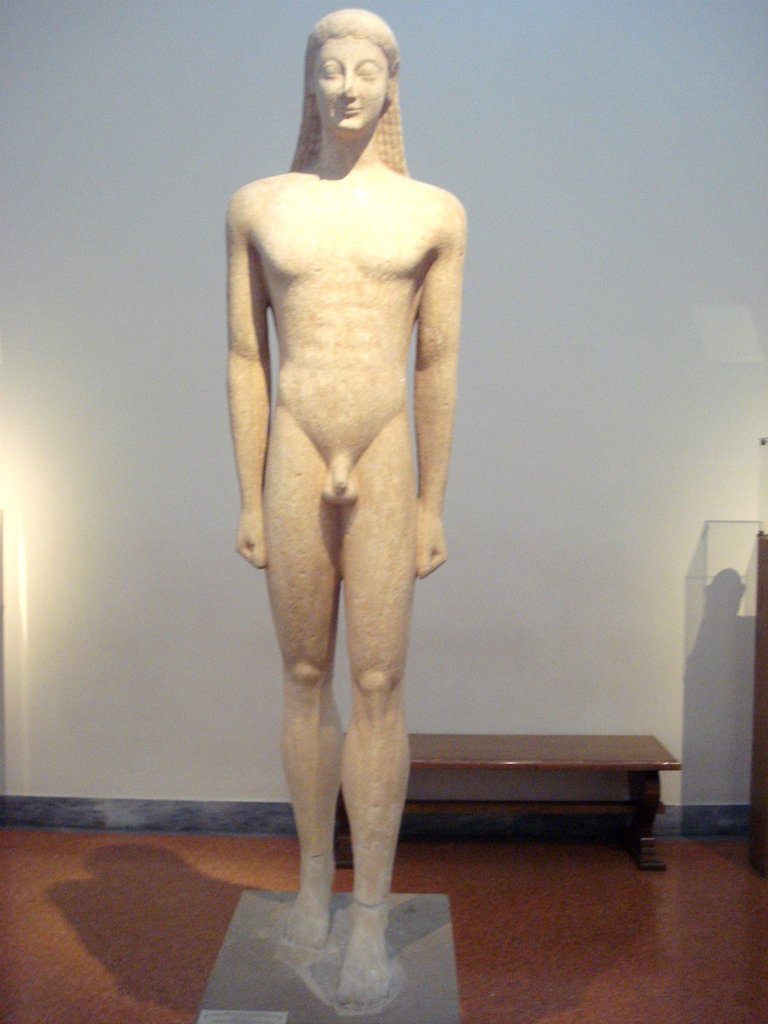
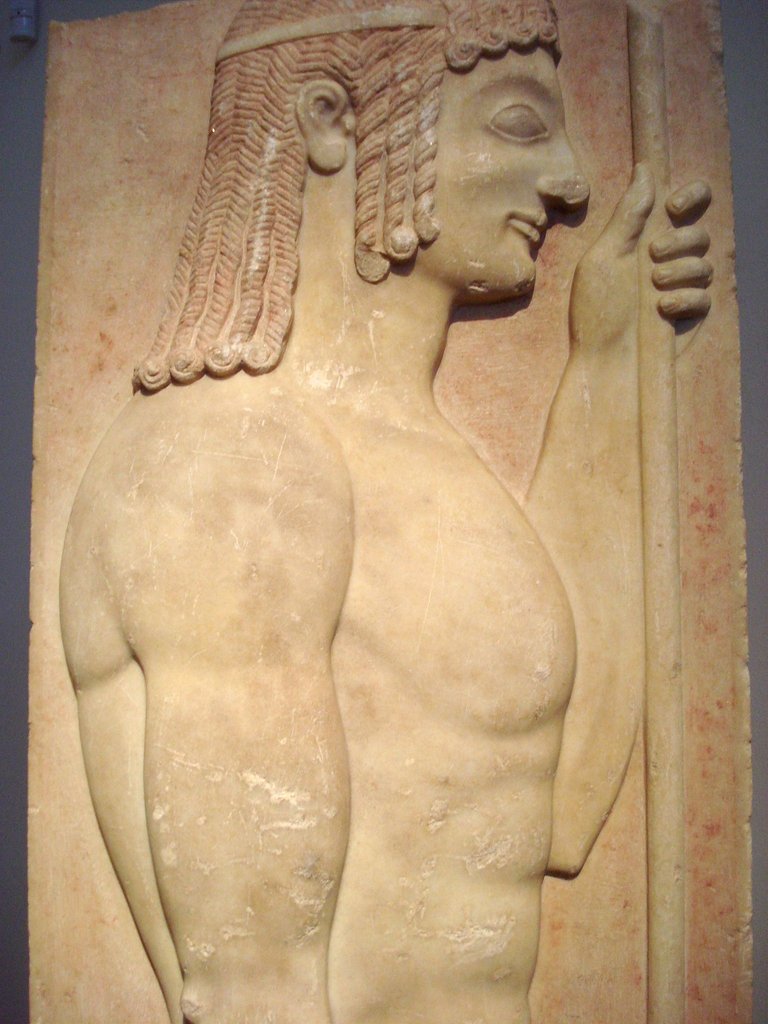
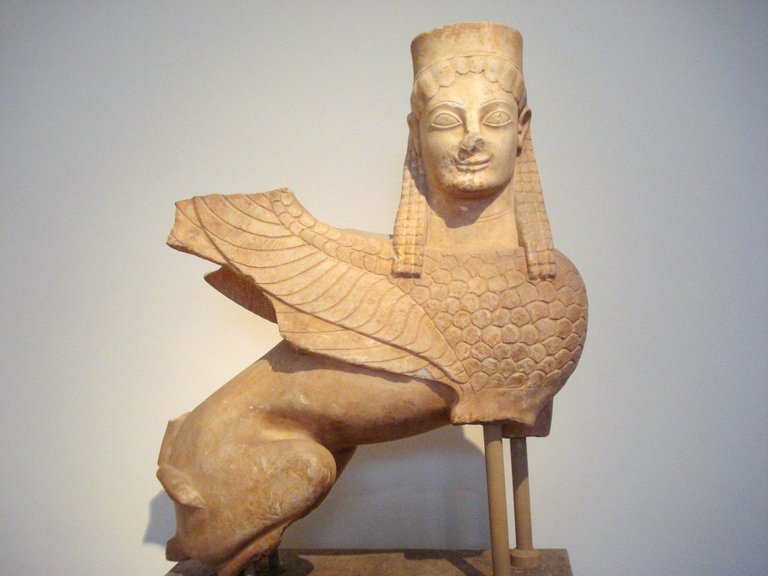
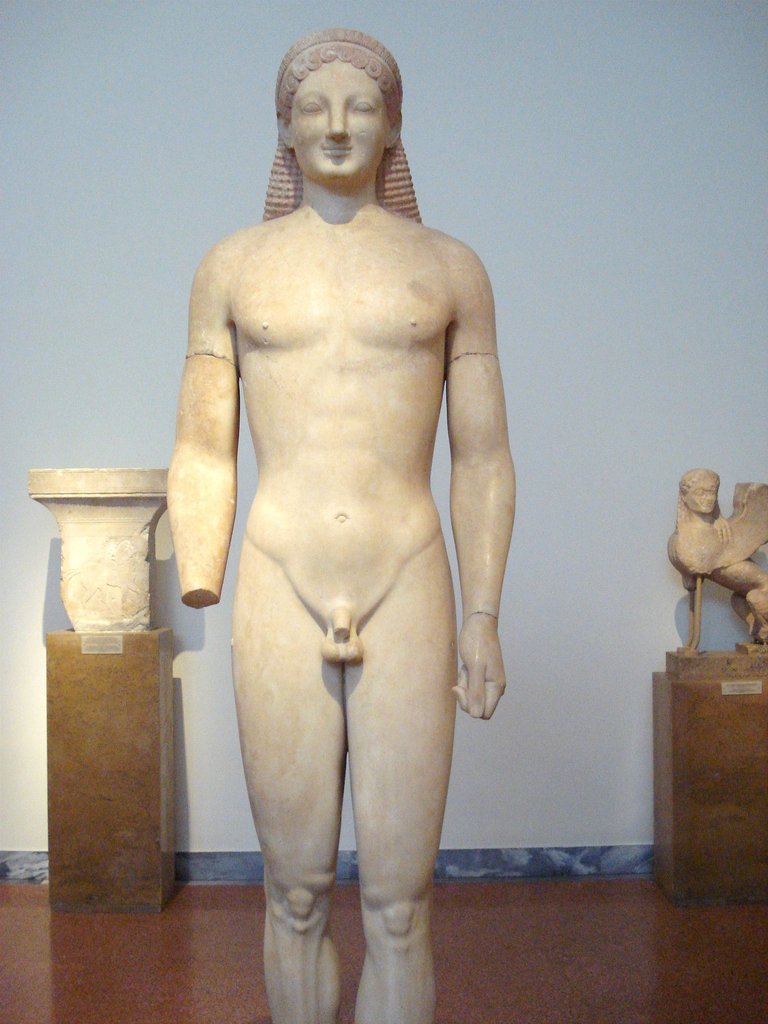
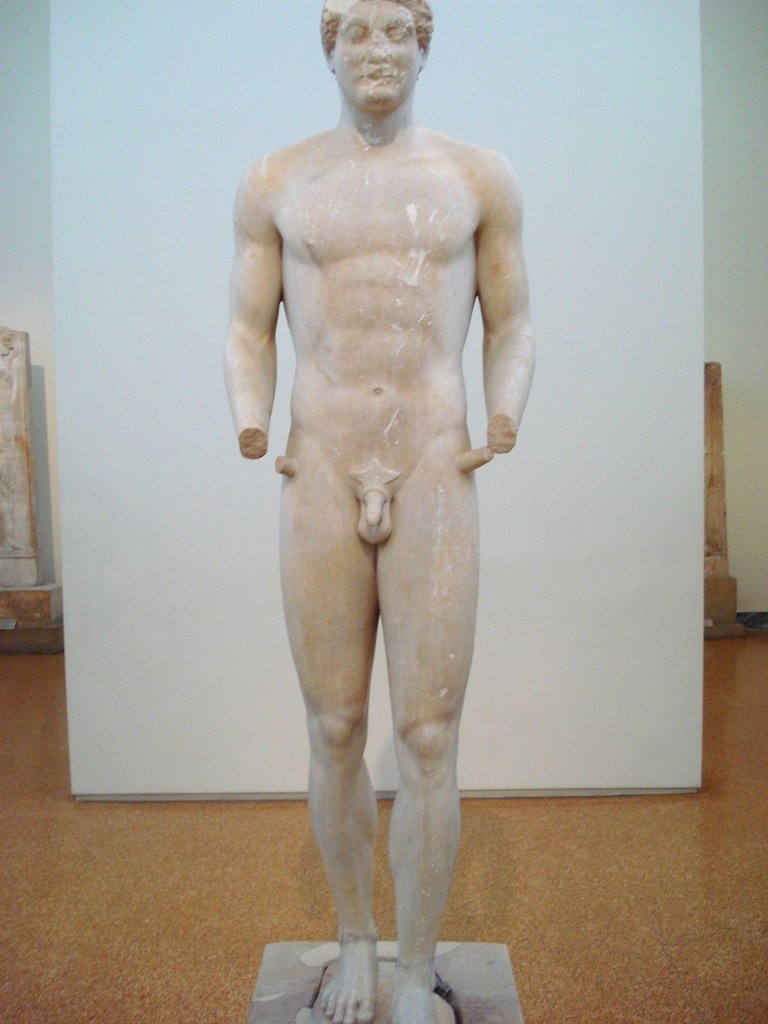
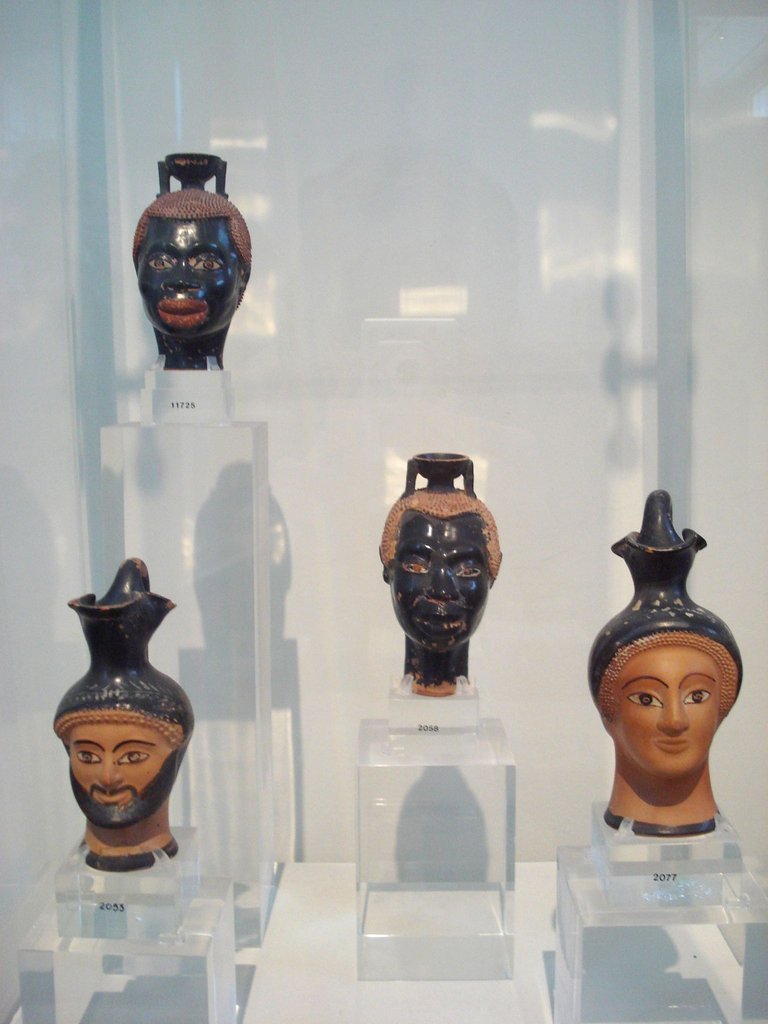
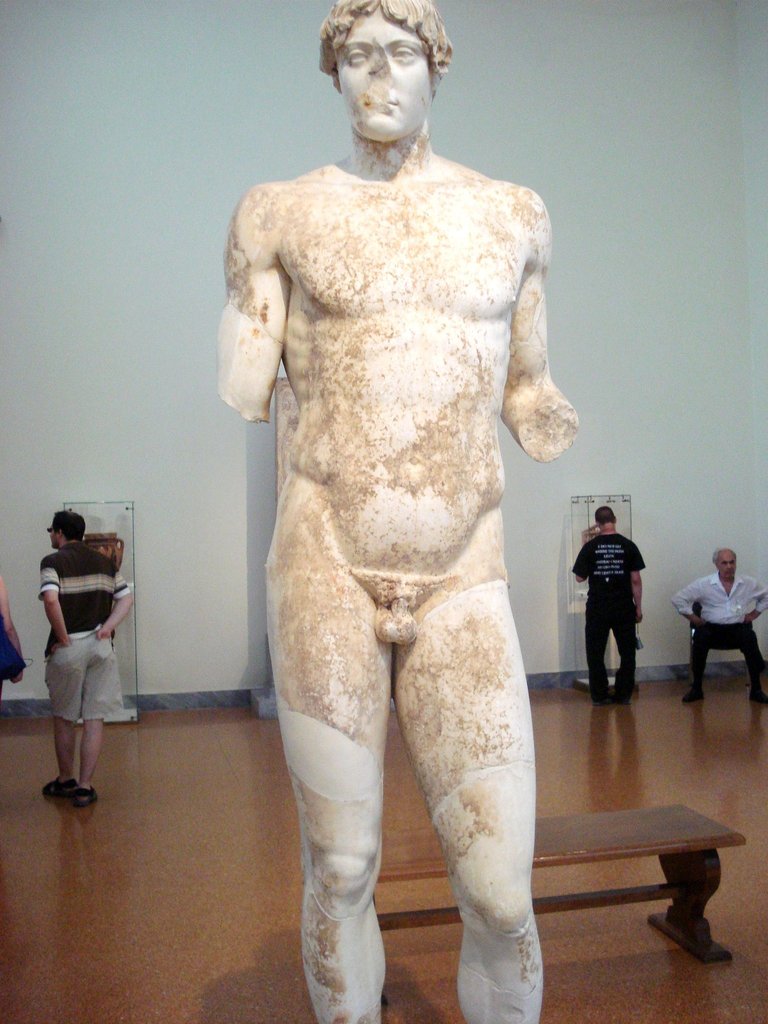
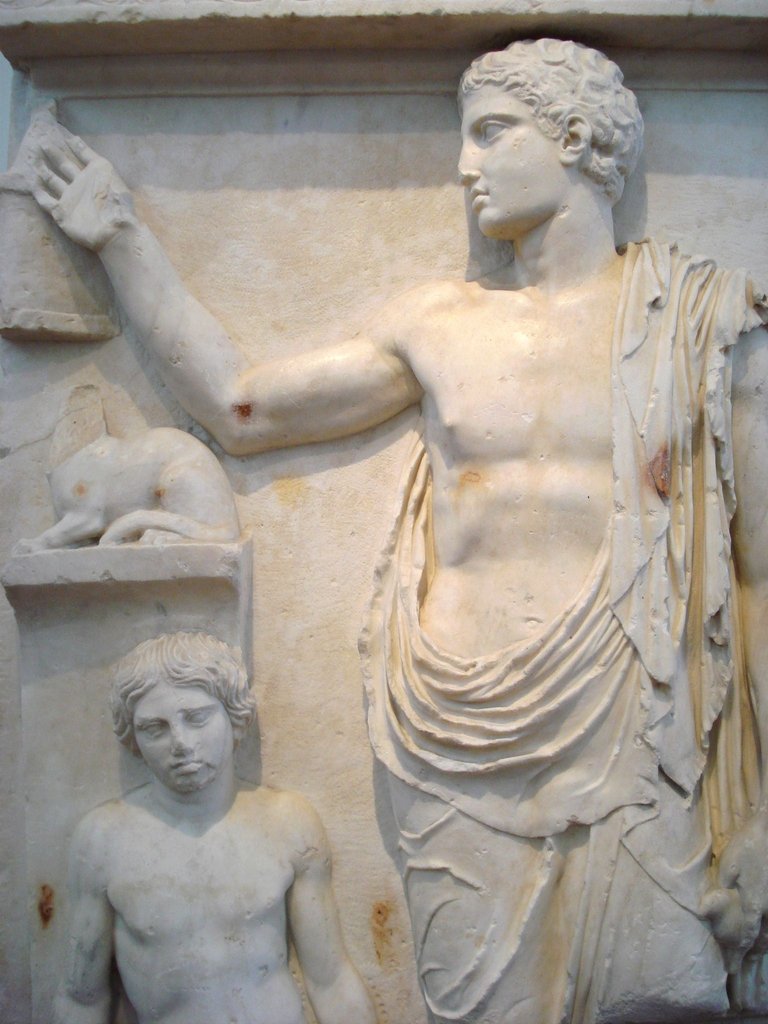
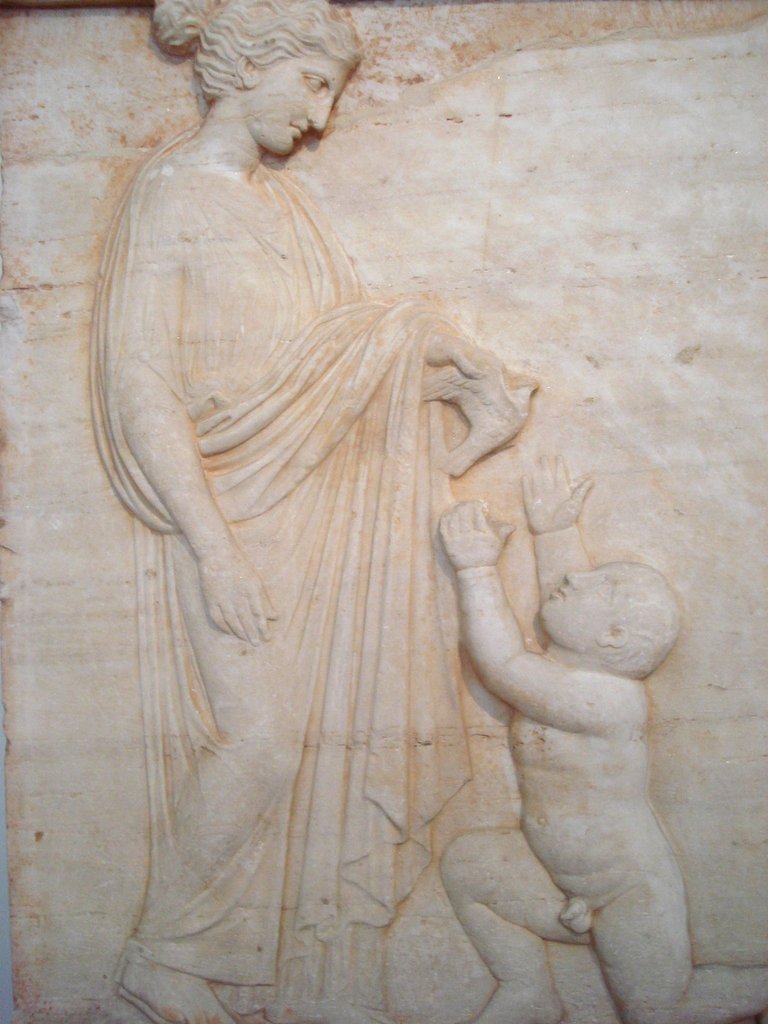
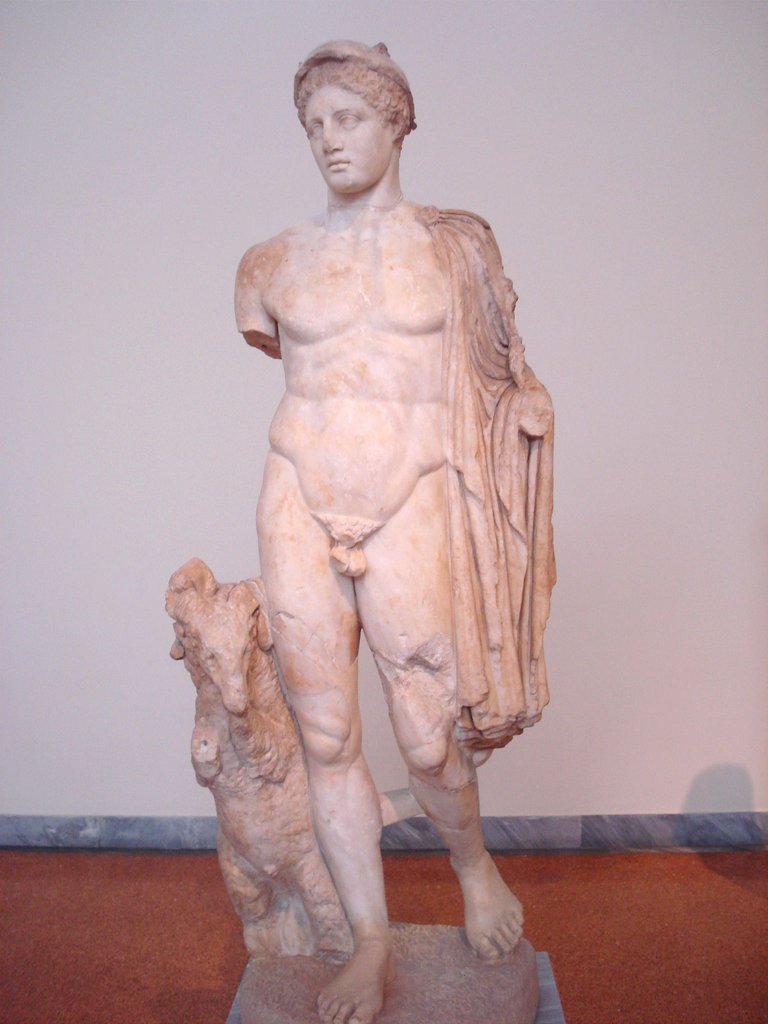
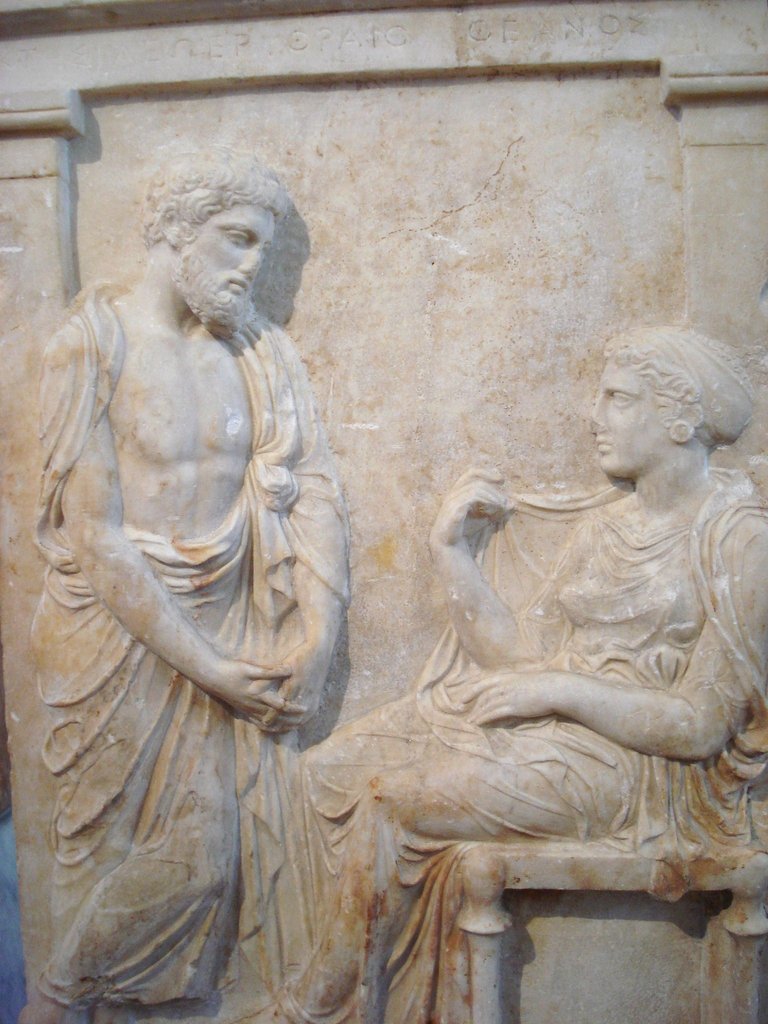
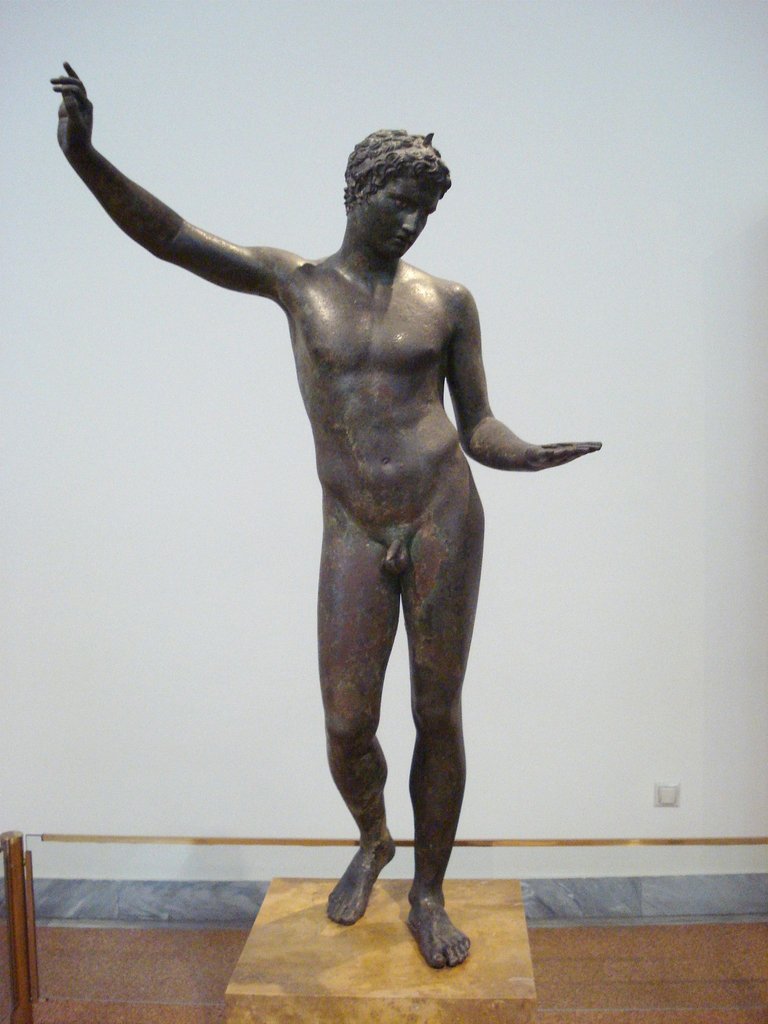
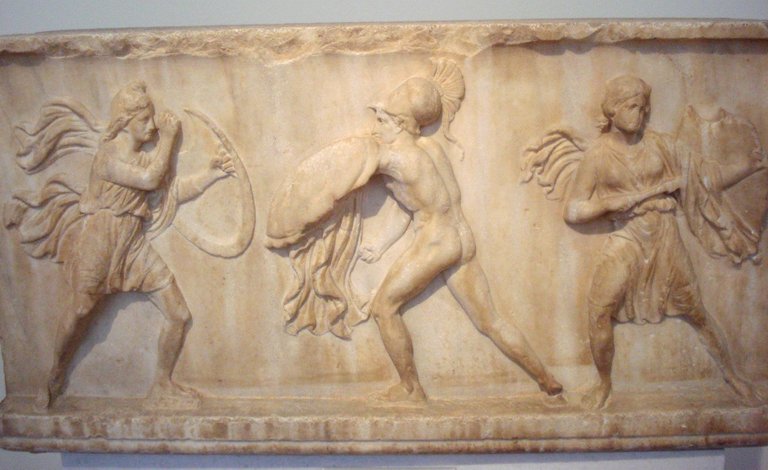
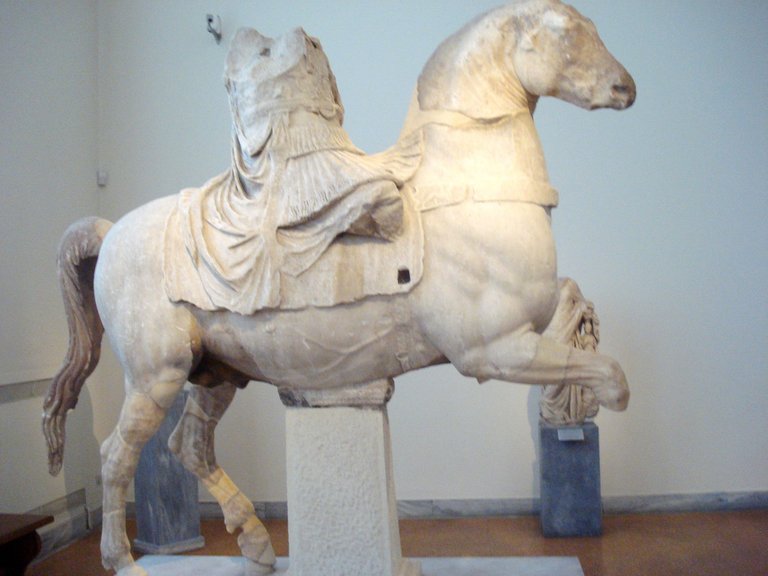
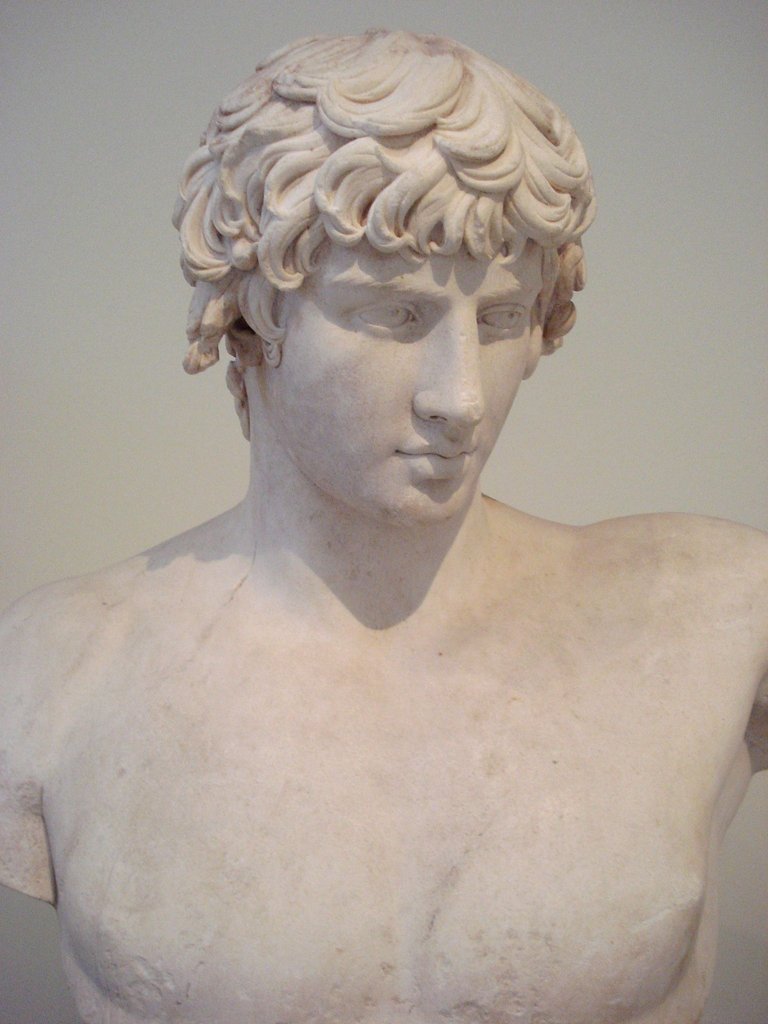
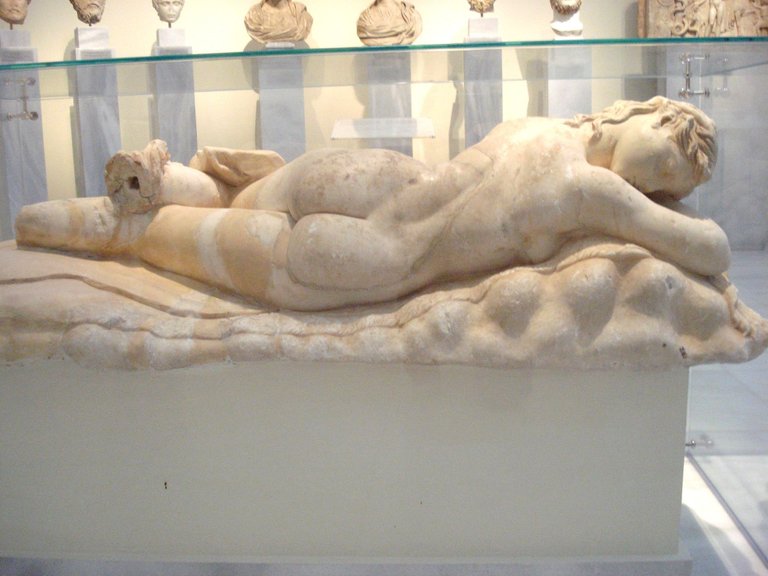
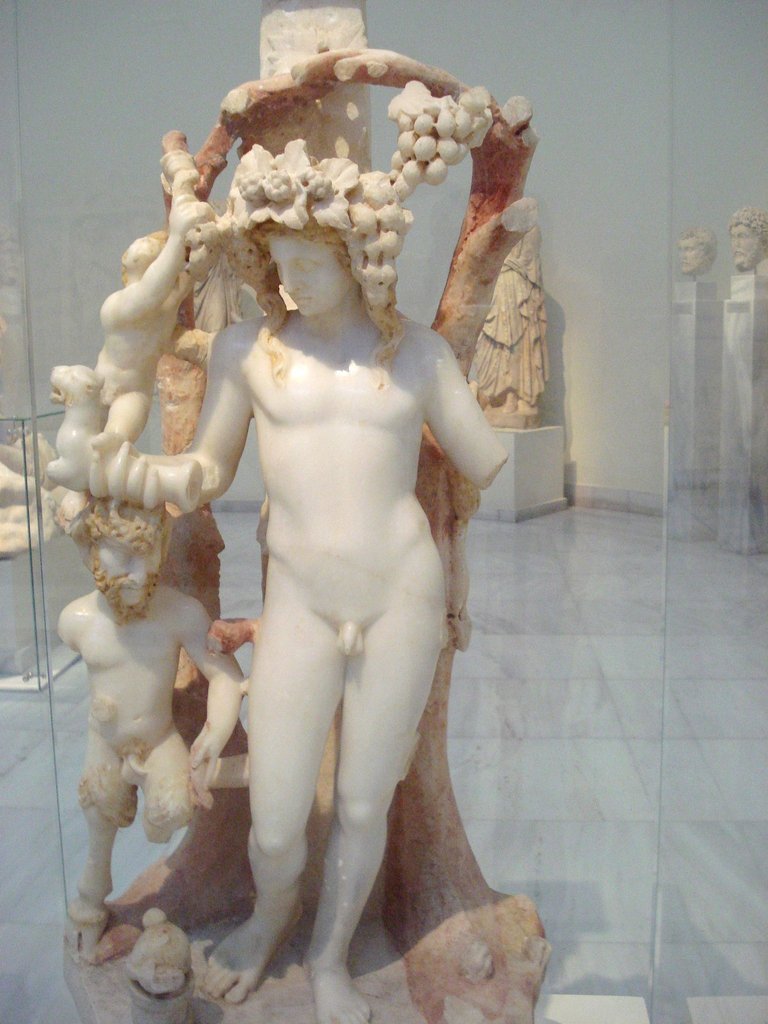

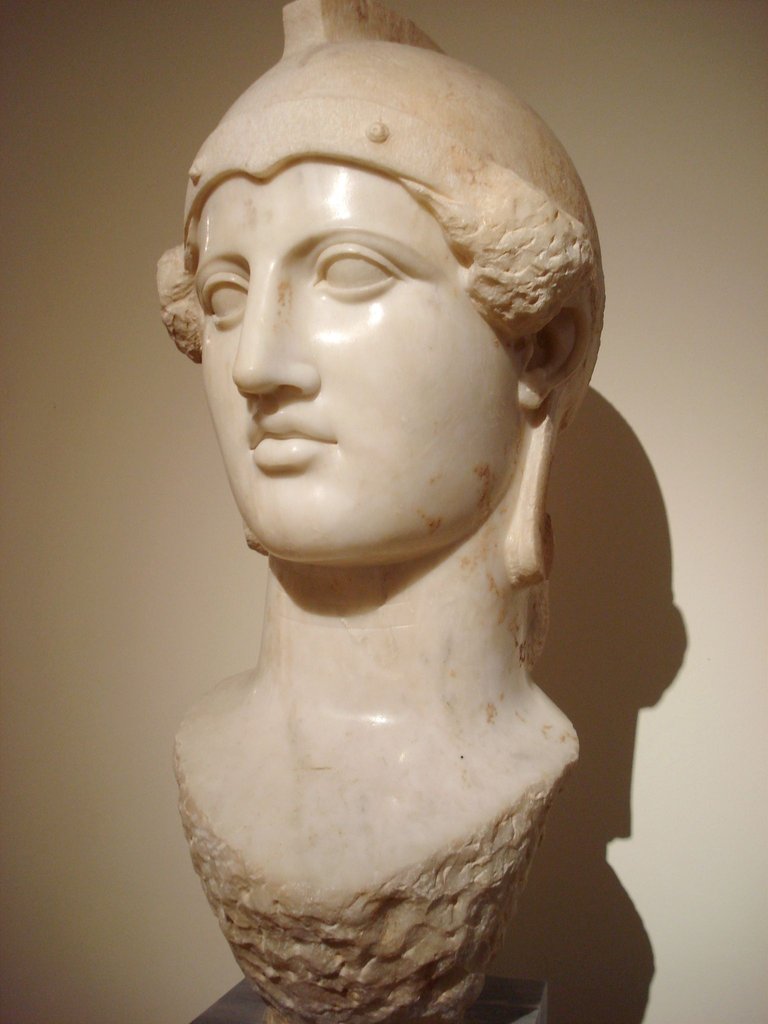
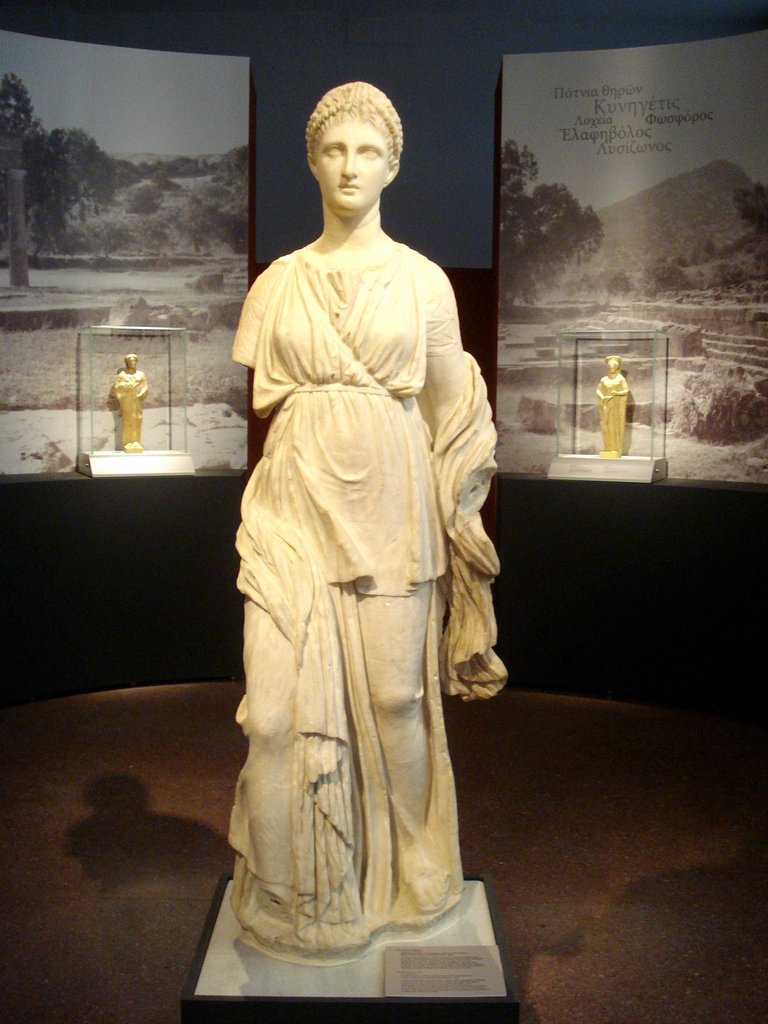
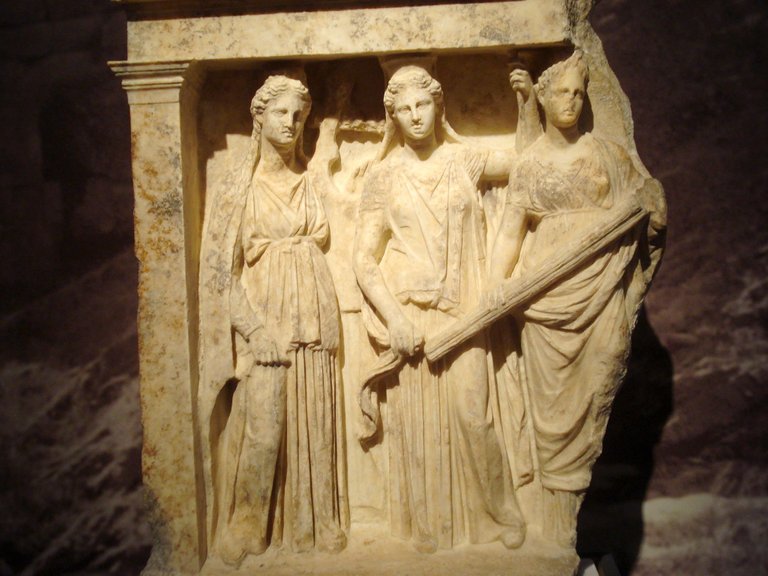
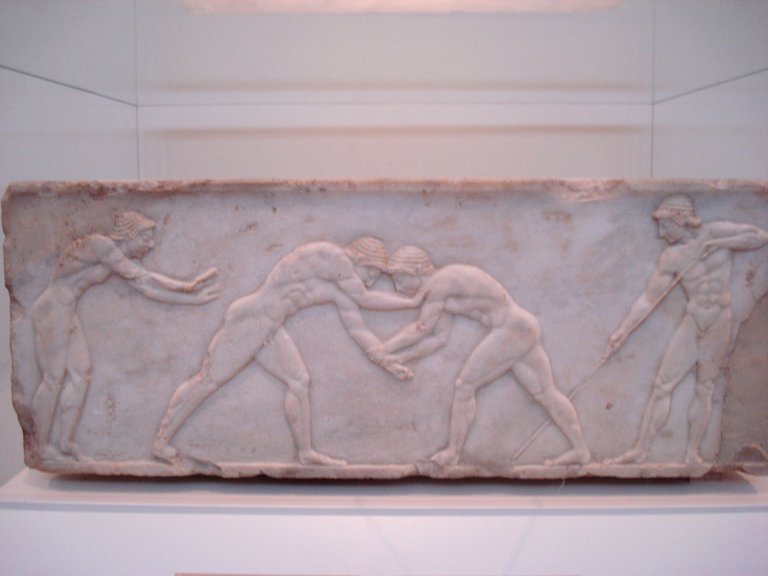
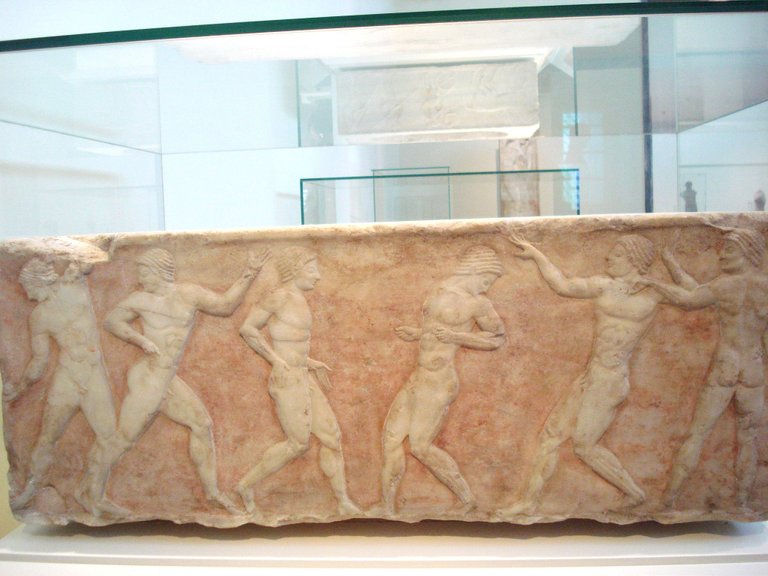
510 a.C. / Representation of the game called episkyros on the marble base of a funerary statue of a young man,
510 BC
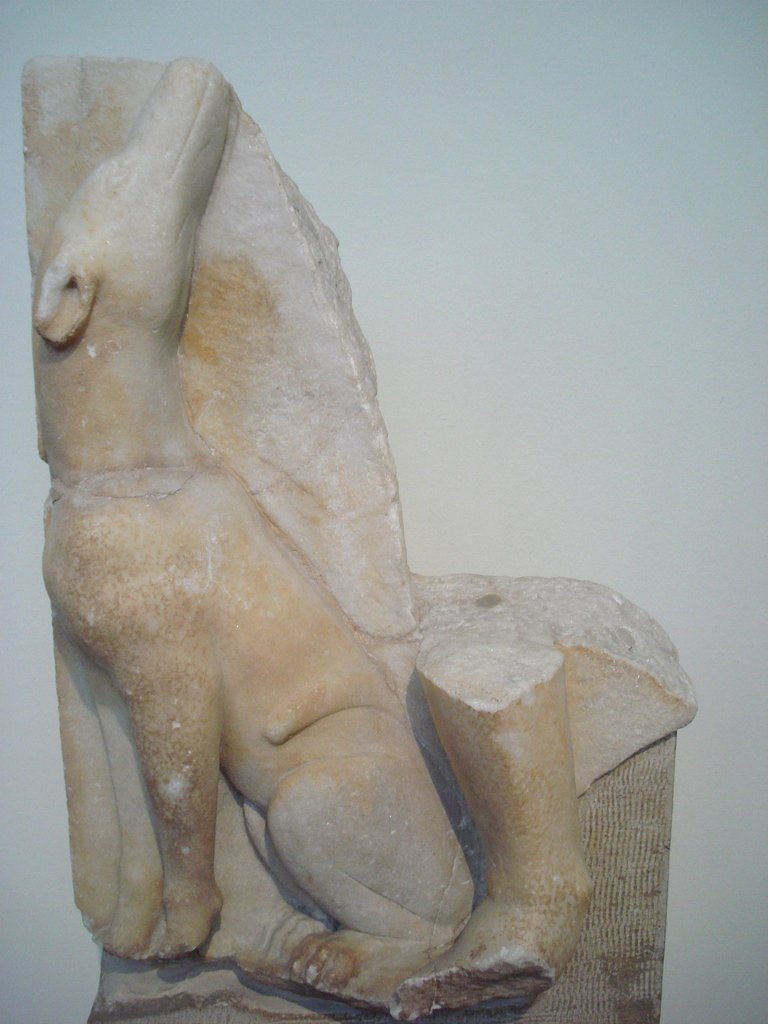
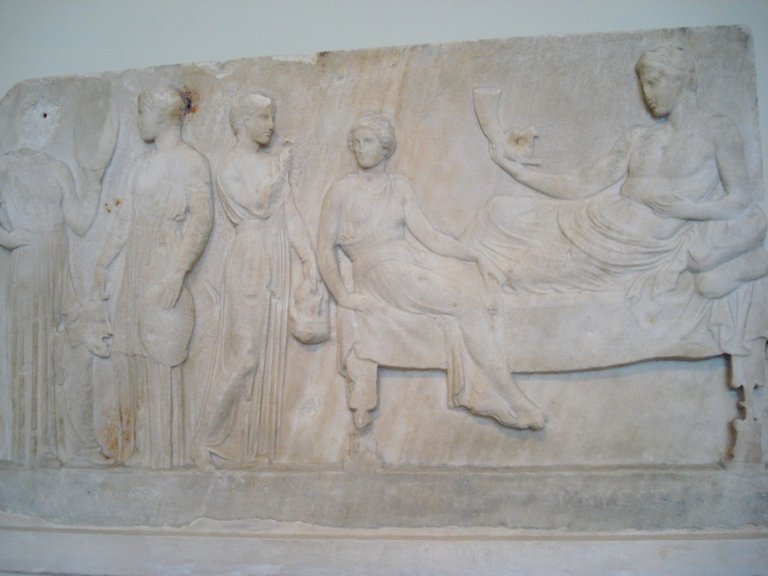
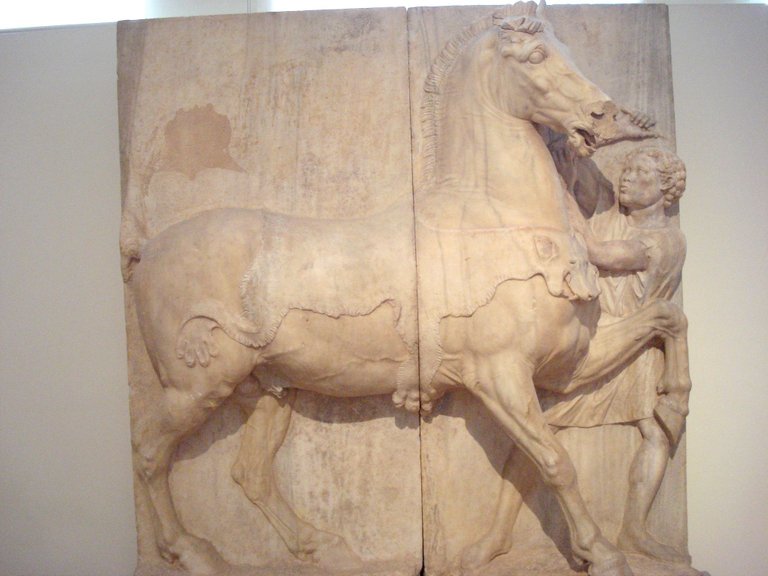
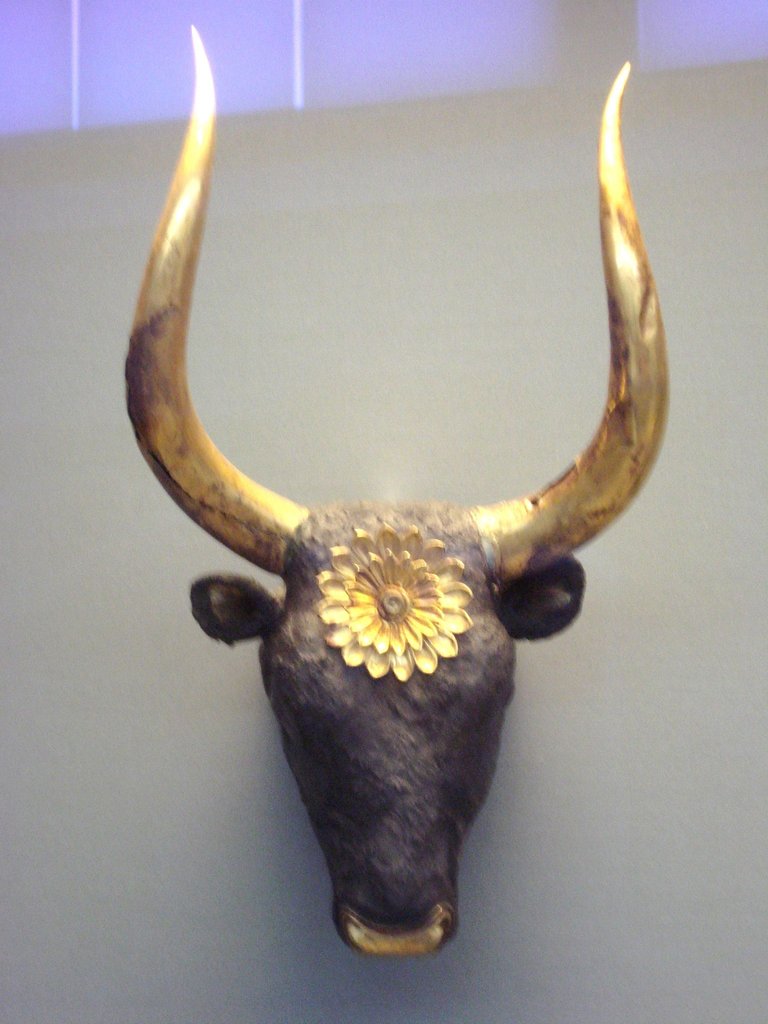
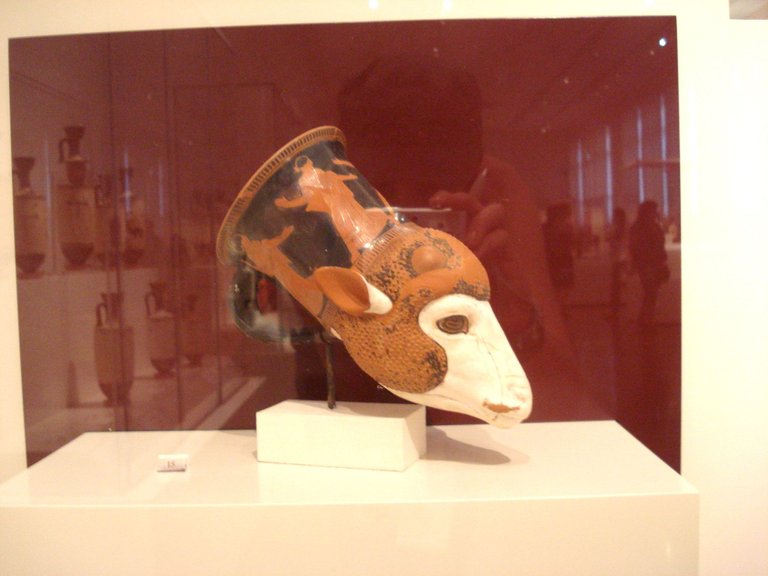
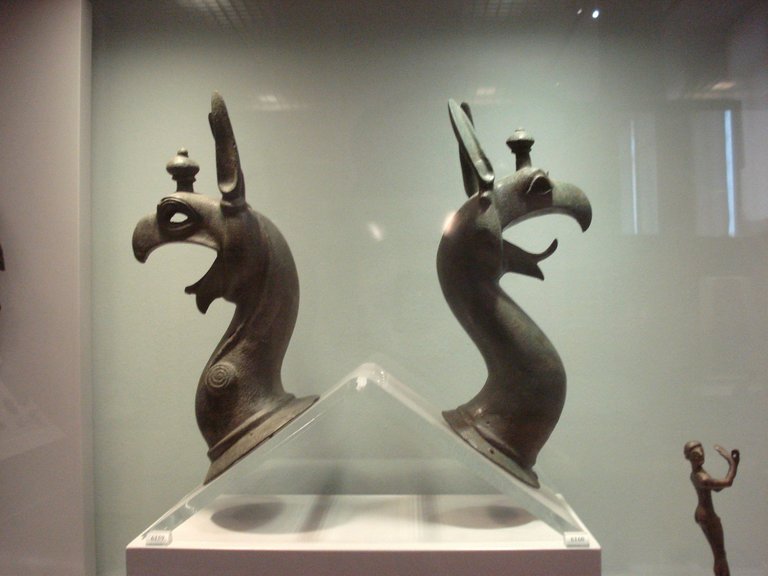
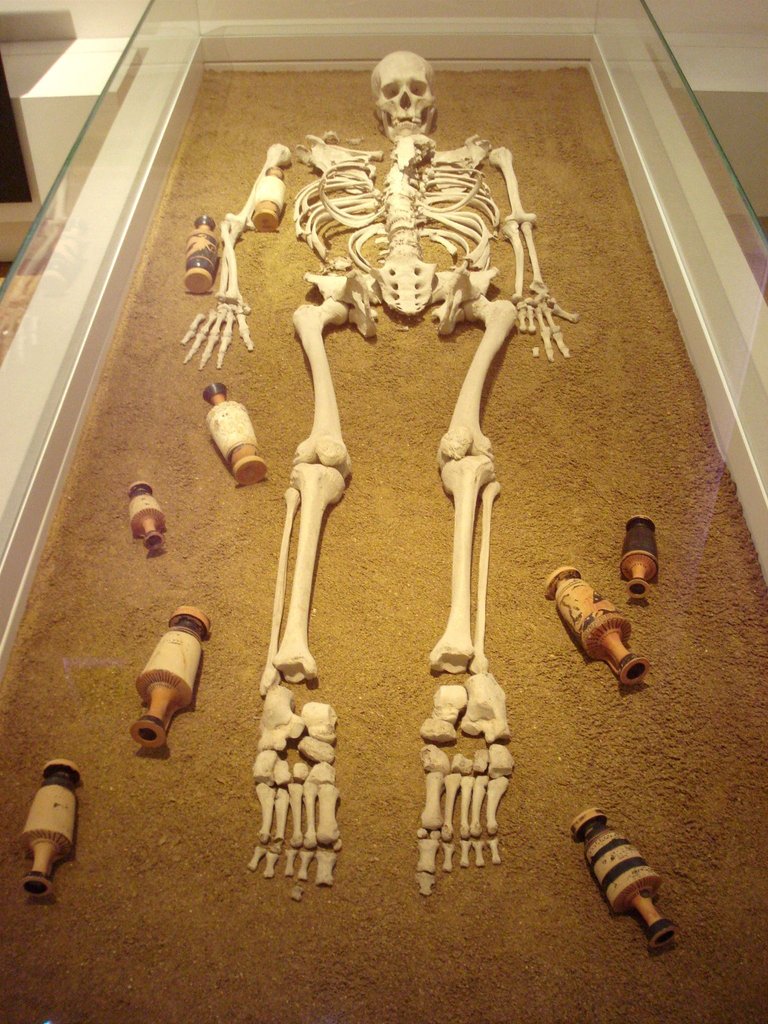
Transcripción de la información del afiche:
Transcript of poster information:
Las figurillas de arcilla, como las antiguas esculturas de piedra griegas, fueron pintadas. Muy pocas figurillas conservan intacta toda la gama de colores, pero varias conservan rastros de pintura, lo que nos permite imaginar su apariencia original; pintadas con una variedad de colores, tienen un aspecto muy brillante y alegre. La técnica decorativa de las primeras figurillas era la de los vasos geométricos y arcaicos, con esmalte negro o marrón rojizo aplicado a la arcilla. A partir del siglo VII a.C., las figurillas se cubrían con engobe blanco antes de la cocción, y esto formaba la base sobre la que se añadían los colores, normalmente después de la cocción. Sin embargo, se conocen casos en los que la decoración coloreada se aplicó directamente sobre la arcilla cocida, sin ninguna capa de fondo. En el período helenístico (finales del siglo IV a. C. en adelante), una parte o incluso la totalidad de la figurilla normalmente también estaba dorada.
The colouring of figurines
Clay figourines like ancient greek stone sculptures, were painted. Very few figurines retain the full range of colors intact, but several preserve traces of paint, allowing us imagine their original appearance; painted with a variety of colors, they have a very bright, cheerful aspect. The decorative technique of the earliest figurines was the one used for geometric and archaic vases, with black or brown-red glaze applied to the clay. From the 7th BC, onwards, figurines were covered with white slip before firing, and this formed the base on which the colors were added, usually after firing. Cases are known, however, in which the coloured decoration was applied directly to the fired clay, without any undercoat. In the hellenistic period (end of the 4th century BC onwards), part or even the whole, of the figurine was normally also gilded.
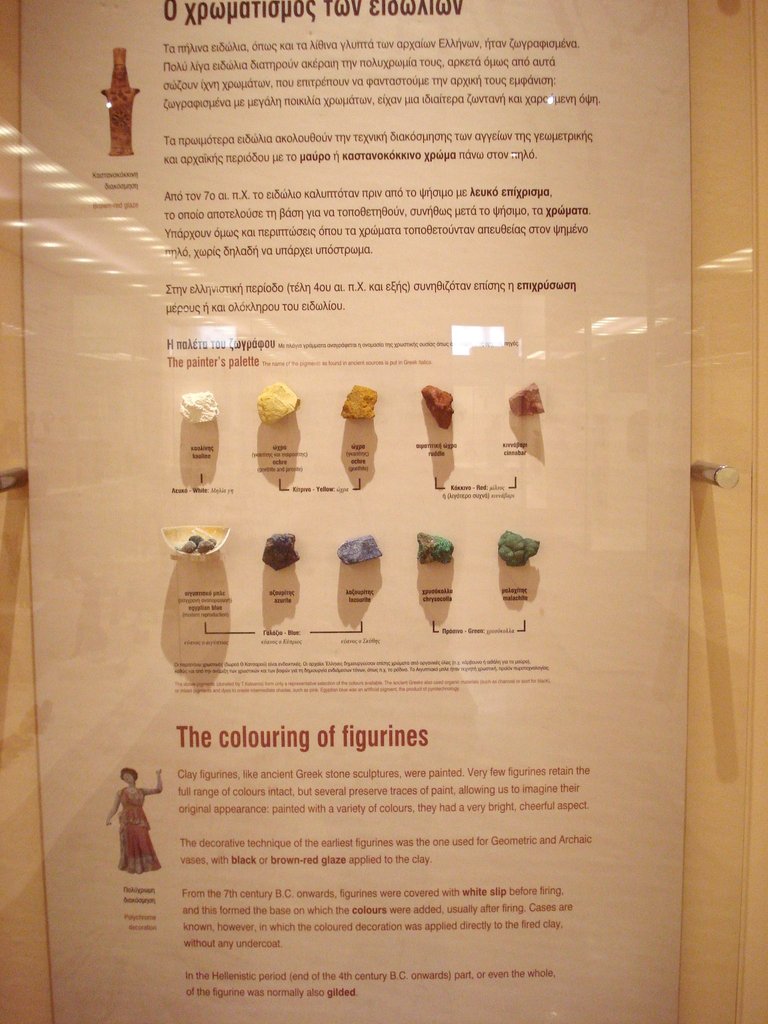
En este afiche se muestran las piedras y elementos naturales que utilizaban para darle color a las piezas.
Caolín para el blanco.
Goethita y jarosita para el amarillo y el ocre.
Almagre y cinabrio para el color rojo.
Azul egipcio, azurita y lazurita para distintos tipos de azul.
Crisocola y malaquita para el color verde.
Los pigmentos anteriores forman solo una selección representativa de los colores disponibles. Los antiguos griegos también usaban materiales orgánicos (como carbón y hollín para el negro) o incluso pigmentos y tintes para crear tonos intermedios como el rosa. El azul egipcio era un pigmento artificial, producto de la pirotecnología.
This poster shows the stones and natural elements that they used to give color to the pieces.
Kaolin for white.
Goethite and jarosite for yellow and ocher.
Almagre and cinnabar for the red color.
Egyptian blue, azurite and lazurite for different types of blue.
Chrysocolla and malachite for the green color.
The above pigments form only a representative selection of the colors available. The ancient greek also used organic materials (such as charcoal and soot for black) or indeed pigments and dyes to create intermediated shades such as pink, Egyptian blue was an artificial pigment, the product of pyrotechnology.
Bueno amigos, hasta aquí la segunda parte de esta visita al Museo Arqueológico Nacional de Atenas, los invito a no perderse la tercera y última parte donde les mostraré parte de la colección del antiguo Egipto que está exhibida en este museo. Gracias por la atención prestada.
Well friends, so far the second part of this visit to the National Archaeological Museum of Athens, I invite you to don´t miss the third and last part where I´ll show you part of the ancient Egyptian collection that is exhibited in this museum. Thank you for your attention.
Gracias por leer, compartir, apoyar, votar y comentar.
Hasta la próxima.
¡Miau!
https://twitter.com/1148004611934117889/status/1629859671866482688
The rewards earned on this comment will go directly to the people( @sofathana ) sharing the post on Twitter as long as they are registered with @poshtoken. Sign up at https://hiveposh.com.
Gracias 😺🤘🤗
Congratulations, your post has been added to Pinmapple! 🎉🥳🍍
Did you know you have your own profile map?
And every post has their own map too!
Want to have your post on the map too?
Congratulations @gatubela! You have completed the following achievement on the Hive blockchain And have been rewarded with New badge(s)
Your next target is to reach 250 posts.
You can view your badges on your board and compare yourself to others in the Ranking
If you no longer want to receive notifications, reply to this comment with the word
STOPTo support your work, I also upvoted your post!
Check out our last posts:
Support the HiveBuzz project. Vote for our proposal!
😲💪🏻😎 thanks! 🙏
😺🤘🤗
That's great @gatubela! We're here to encourage you to achieve your next goals on Hive!
BTW, our funding proposal needs your support to keep HiveBuzz alive and thriving. Let's make Hive a more exciting place together!
All you need to do is to click on the "support" button on this page: https://peakd.com/proposals/248.
Thank you!
Nice post, great art shots @gatubela friend!
!discovery 30
!PIZZA
Muchas gracias amigo @jlinaresp, es muy motivador recibir un comentario así de alguien experto en el arte de la fotografía 📸 y gracias por la 🍕😋
Saludos 😺🤘🤗
Muchas gracias amigo @jlinaresp, es muy motivador recibir un comentario así de alguien experto en el arte de la fotografía 📸 y gracias por la 🍕😋
Saludos 😺🤘🤗
This post was shared and voted inside the discord by the curators team of discovery-it
Join our Community and follow our Curation Trail
Discovery-it is also a Witness, vote for us here
Delegate to us for passive income. Check our 80% fee-back Program
I'm gratefull, thank you very much 😺🤘🤗
I gifted $PIZZA slices here:
@jlinaresp(8/10) tipped @gatubela (x1)
Learn more at https://hive.pizza!
Que bien por continuar con la visita a ese museo tan importante para difundir los orígenes de la cultura del mundo occidental
Gracias a tí por continuar leyendo esta serie, te espero en la última parte donde les mostraré algo de la colección del antiguo Egipto que alberga este gran museo. Saludos 😺🤘🤗